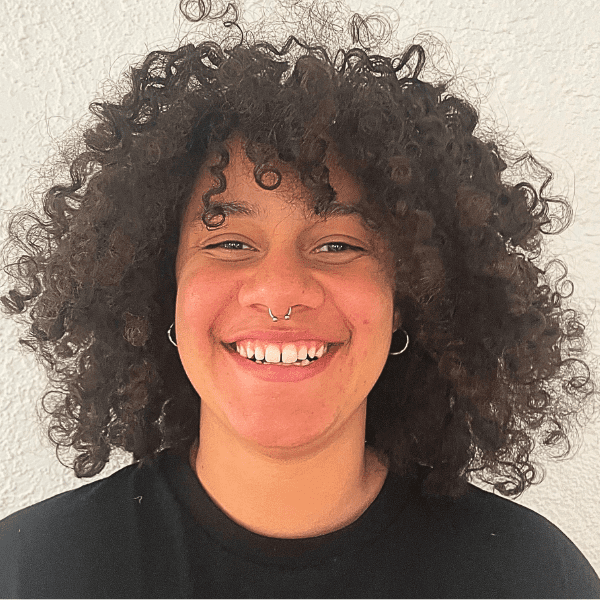An American Rescue Plan Update: Nearly $3 Billion Now Budgeted for Healthy Homes
by Zoe Gibbs and Sarah Goodwin
The American Rescue Plan Act (ARPA), passed in 2021, provided $350 billion in direct federal aid to states and localities. With such breadth and flexibility for communities to choose how to use this funding, it is valuable to see where, why, and how many communities have decided to focus on healthy housing initiatives. The significance of a community’s decision to invest in healthy housing cannot be understated; the removal of lead hazards, improvements to water quality, and repairing of homes is a valuable investment into the public health of their respective community.
Our Previous Survey
We previously surveyed publicly released data from 2022 from the Treasury Department about how communities are using ARPA for healthy housing initiatives. Now, we are updating our findings with the data released in 2023 and 2024. Previously, we reported that 368 projects by states, cities, and counties had cumulatively budgeted over $1.7 billion toward healthy homes. Using the 2023-24 updated data, we found that this number increased to 1,079 projects by states, cities, and counties and a cumulative budget of $2.95 billion that is going towards healthy homes projects.
Where to Find This Information
To find the complete set of ARPA data and an overview of the information and data used in this survey, you can review the information provided by the Treasury Department here. The official name for the ARPA funds to states and localities is the Coronavirus State and Local Fiscal Recovery Funds program. Treasury releases public data here from Tier 1 and Tier 2 (states, territories, and cities and counties that received more than $10 million) and Tier 4 (small cities and counties). The Treasury also distributed funds to tribal governments as Tier 3 and Tier 4, but data from those recipients is not published publicly.
The data used in our survey from tiers 1-2 was from December 31, 2022; Tier 5 used data from March 31, 2022. For this survey, we used data through March 31, 2024, for tiers 1, 2, and 5.
Our New Survey
For these surveys, we looked at budgets (decisions made or announced about how to spend the funds), obligations (orders placed or other transactions to spend the funds), and expenditures (activities that have been paid for and completed). As with the previous survey, Tier 5 recipients tend not to report budgets for activities.
- Adopted budgets with $2,953,585,557 for healthy housing-related activities.
- Obligated $2,372,340,326 for these activities:
- Tiers 1-2: $2,324,582,017
- Tier 5: $47,758,308
- Expended $758,213,690 for these activities:
- Tiers 1-2: $721,616,344
- Tier 5: $36,597,346
Project Breakdown
While the table below only presents the numbers we collected from the 2024 data as it is the most recent data available, we also looked at data from 2023 when we conducted this analysis.
| Category | Amounts Budgeted and Obligated |
Change Between Rounds One and Two |
Number of Projects |
| Addressing other residential drinking water quality/access issues | $678 million budgeted; $668.7 million obligated* |
budget increased by $261.3 million; obligations increased by $664.7 million |
57 |
| Addressing hazards in schools | $417.4 million budgeted; $203.8 million obligated |
budget increased by $148.8 million; obligations decreased by $4.6 million |
418** |
| Home repairs, including many programs that address specific healthy housing issues, like lead paint hazards, mold, environmental asthma triggers, and modifications for aging in place | $413.7 million budgeted; $367.1 million obligated |
budget decreased by $94.3 million; obligations increased by $238.5 million |
158 |
| Lead service line replacement | $409.9 million budgeted; $385.7 million obligated |
budget increased by $196.8 million; obligations increased by $264.3 million |
100 |
| Lead poisoning prevention, including both primary and secondary prevention measures | $388.9 million budgeted***; $205.7 million obligated |
budget increased by $316.7 million; obligations increased by $153.6 million |
24 |
| Weatherization and energy efficiency upgrades | $221.6 million budgeted; $194.4 million obligated |
budget increased by $125.8 million; obligations increased by $137.7 million |
50 |
| Other lead in water work (including inventories and corrosion control) | $216.8 million budgeted; $173.6 million obligated |
budget increased by $191.2 million; obligations increased by $168.1 million |
142 |
| Addressing PFAS in drinking water | $128.2 million budgeted; $121.7 million obligated | budget increased by $37.7 million; obligations increased by $64.9 million |
91 |
| Home repairs for aging in place | $28.5 million budgeted; $26.6 million obligated |
budget increased by $27.4 million; obligations increased by $25.5 million |
9 |
| Electrification | $26.1 million budgeted; $8 million obligated |
budget increased by $538,000; obligations increased by $2.5 million |
10 |
| Public engagement work related to environmental hazards or healthy homes | $8.7 million budgeted; $7.3 million obligated |
budget increased by $4.4 million; obligations increased by $4.3 million |
7 |
| Work to increase local housing/code inspection capacity | $6.7 million budgeted; $956,207 obligated |
budget increased by $406,000; obligations increased by $215,900 |
6 |
| Resiliency or disaster response work in homes | $6.6 million budgeted; $6.3 million obligated |
budget increased by $2.3 million; obligations increased by $3.5 million |
5 |
| Addressing woodstoves | $2.3 million budgeted and obligated | budget and obligations increased by $20,000. |
1 |
Note that *$623.8 million of this budget amount is for work performed by the State of Georgia, **403 of these projects are work performed by the State of of Missouri, and ***$178.5 million of this budget amount is for work performed by the State of of New Jersey. Source: Data from the U.S. Treasury Department, analysis by NCHH.
Differences Between Our Two Surveys
Since our last blog on the topic, we saw increases of $1,235,360,935 in adopted budgets, $1,716,729,939 in obligations, and $612,908,009 in expenditures healthy housing-related activities.
Why do we see these differences? There are a variety of reasons why there are differences between the data in between the previous and latest surveys. The addition of more projects in certain categories can account for much of the increases in budget. To explain the decreases, some projects could have been canceled, so we had to delete them when we revisited the data. There also could have been instances of human error or a decision to code a project differently in our two surveys.
It’s not surprising that the obligations changed the most, as we expect that more communities are moving into that phase of the projects.
Program Highlights
In addition to the collected data, we discovered a variety of projects that show the breadth of how ARPA funding can be used to further healthy housing initiatives, some of which are described below. (The descriptions below are taken from the reports submitted by the recipients and published by the Treasury Department. Some have been edited slightly to conform to NCHH’s style guidelines.)
Portland City, Maine (Tier 2, Project ID: TPN-143089): Helping low- and middle-income homes reduce energy costs by weatherizing their homes and helping them transition away from fossil fuels to electric heating appliances, electric vehicles, or electric bicycles which will reduce their energy costs, providing them with more stable housing.
Commonwealth of Massachusetts (Tier 1, Project ID: TPN-113157): The Commonwealth allocated $100 million to improving ventilation and indoor air quality in schools, particularly in districts with high concentrations of economically disadvantaged students and/or English language learners and in communities disproportionately impacted by COVID-19. The purpose of this grant program is to address inequitable school facilities’ needs and repairs for improved ventilation and indoor air-quality to support healthy learning environments.
County of Bucks, Pennsylvania (Tier 1, Project ID: TPN-050244): Bucks United Flood Recovery (BUFR) is a partnership between United Way of Bucks County and the County of Bucks to help implement services in support of the recovery from severe flooding on July 12, 2021. Services provided under the BUFR program may include emergency repairs, mold mitigation and/or remediation, rebuild and rehabilitation, and other services that ensure that the dwellings of low- and moderate-income Bucks County residents are safe, secure, and sanitary.
Cook County, Illinois (Tier 1, Project ID: TPN-109336): Coordinated by the Bureau of Economic Development, Cook County will partner with Elevate to conduct the replacement of developmentally harmful lead service lines across Suburban Cook County. The pilot is two-pronged: It will direct replacement of lead service lines and prioritize community engagement for education and readiness for future lead service line replacement. This program will target high-risk communities, including improvements to individual homes and high-risk facilities, including preschools, day care centers, home day care providers, group day care homes, parks, playgrounds, hospitals, and clinics. Communities with a need for education and technical assistance were identified through community engagement and records from the local utility.
Milwaukee, Wisconsin (Tier 1, Project ID: TPN-063830): The project funds Employ Milwaukee’s Healthy Homes Construction Careers Program, which is designed to connect trained workers with lead abatement certifications to contractors who are paid by the City of Milwaukee Health Department to remediate high-lead-risk homes.
Fort Collins, Colorado (Tier 2, Project ID: TPN-173401): To fund improvements in livability for mobile home residents through enhanced engagement, code compliance and a demonstration of comprehensive home energy upgrades. This offer addresses the unique needs of mobile home park communities, builds relationships with residents, and develops strategies for improved livability.
ARPA was passed in 2021, but it is still very much a live opportunity for communities. The total budgeted healthy homes funding we identified went from $1.7 billion in the 2022 data to $2.5 billion in the 2023 data to $2.95 billion in the 2024 data, demonstrating how communities have continued to add new uses for this funding in the years since the funding was first distributed. Recipients have until December 31, 2024, to obligate their funding and until December 31, 2026, to spend it, meaning that the final months of 2024 are a critical period for any communities still working to allocate funds.
 A summer intern for NCHH in 2024, Zoe Gibbs is a rising undergraduate senior currently studying sociology, American culture studies, and political science at Washington University in St. Louis. She has a strong passion for helping historically marginalized communities live with dignity and joy.
A summer intern for NCHH in 2024, Zoe Gibbs is a rising undergraduate senior currently studying sociology, American culture studies, and political science at Washington University in St. Louis. She has a strong passion for helping historically marginalized communities live with dignity and joy.
 Sarah Goodwin joined NCHH as a policy analyst in June 2017. She previously served NCHH as a policy intern, helping to establish and run the Find It, Fix It, Fund It lead action drive and its work groups. She holds a Bachelor of Arts degree in Interdisciplinary Studies: Communications, Legal Institutions, Economics, and Government from American University.
Sarah Goodwin joined NCHH as a policy analyst in June 2017. She previously served NCHH as a policy intern, helping to establish and run the Find It, Fix It, Fund It lead action drive and its work groups. She holds a Bachelor of Arts degree in Interdisciplinary Studies: Communications, Legal Institutions, Economics, and Government from American University.
